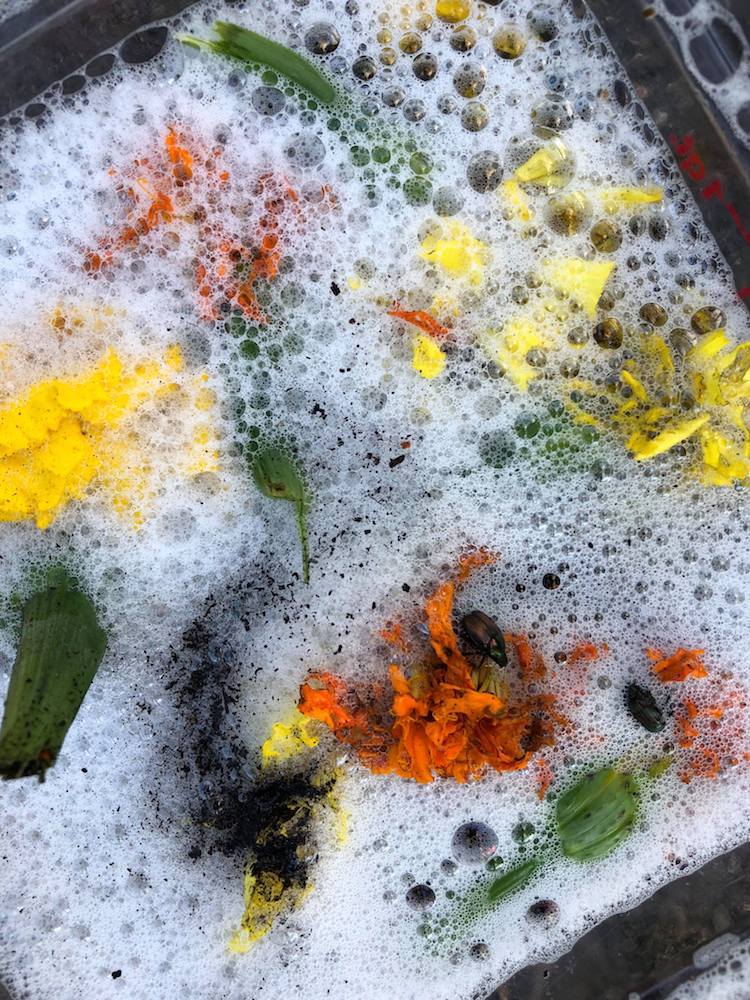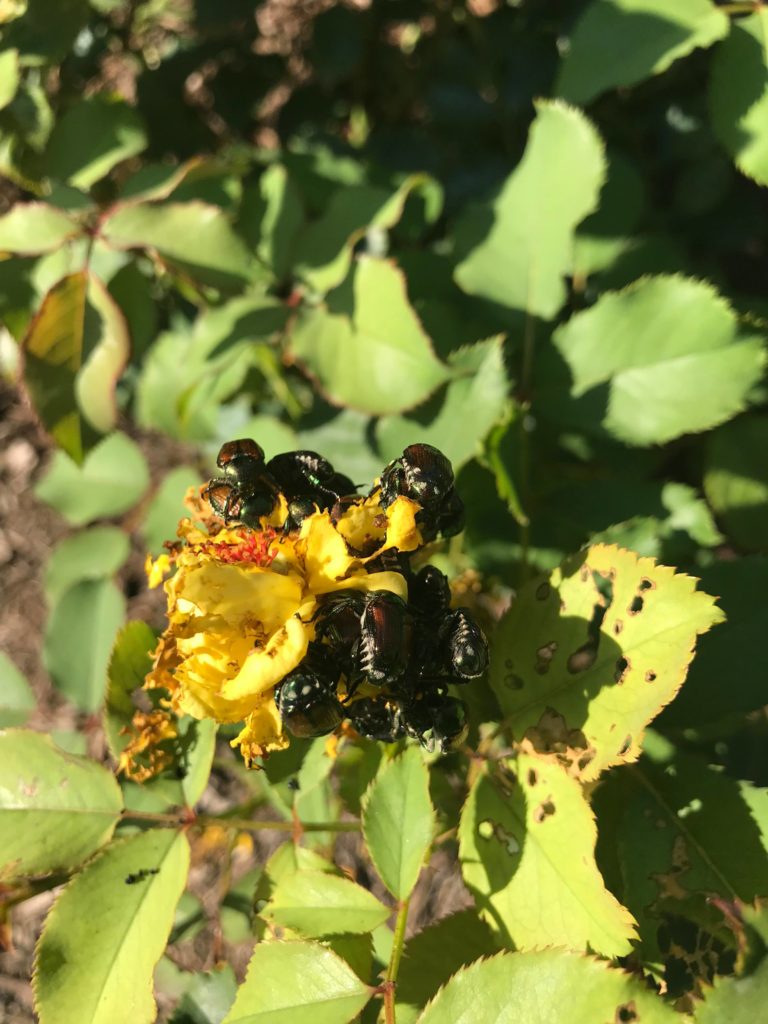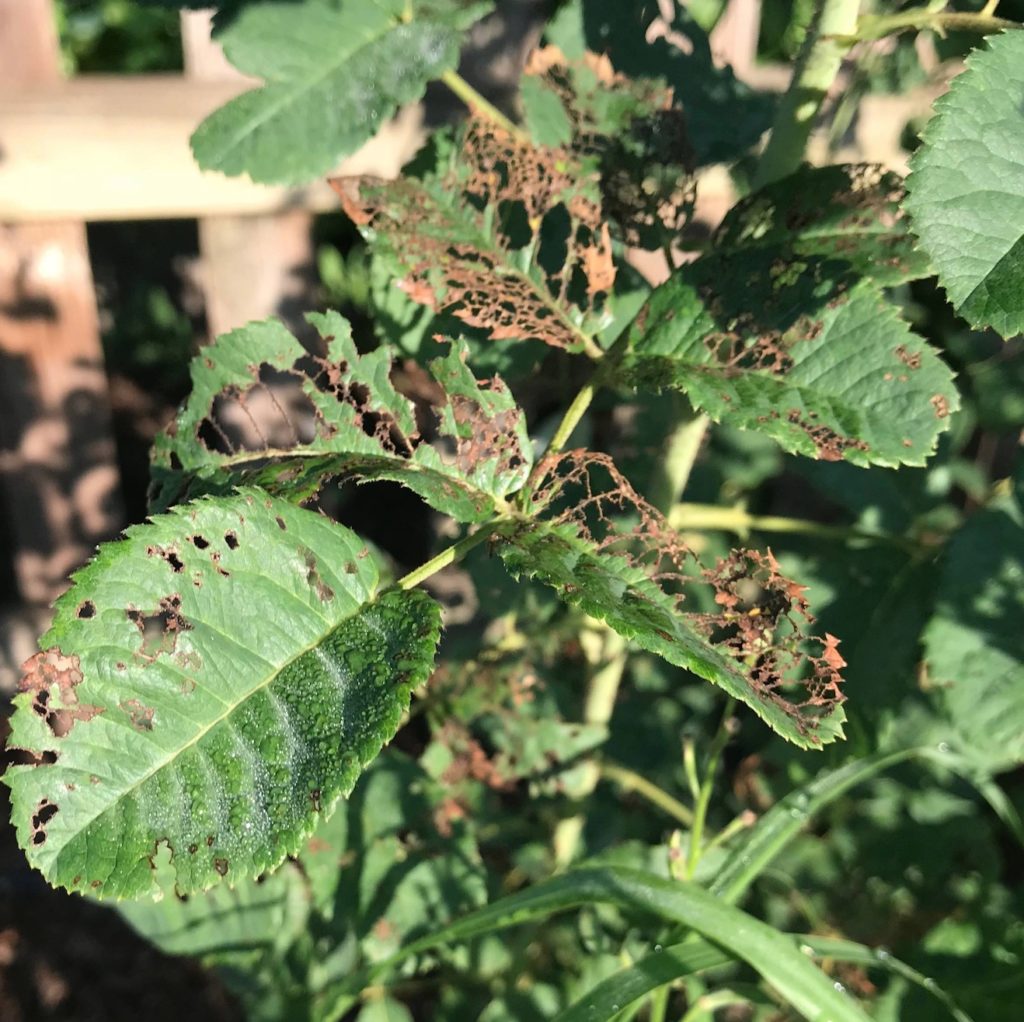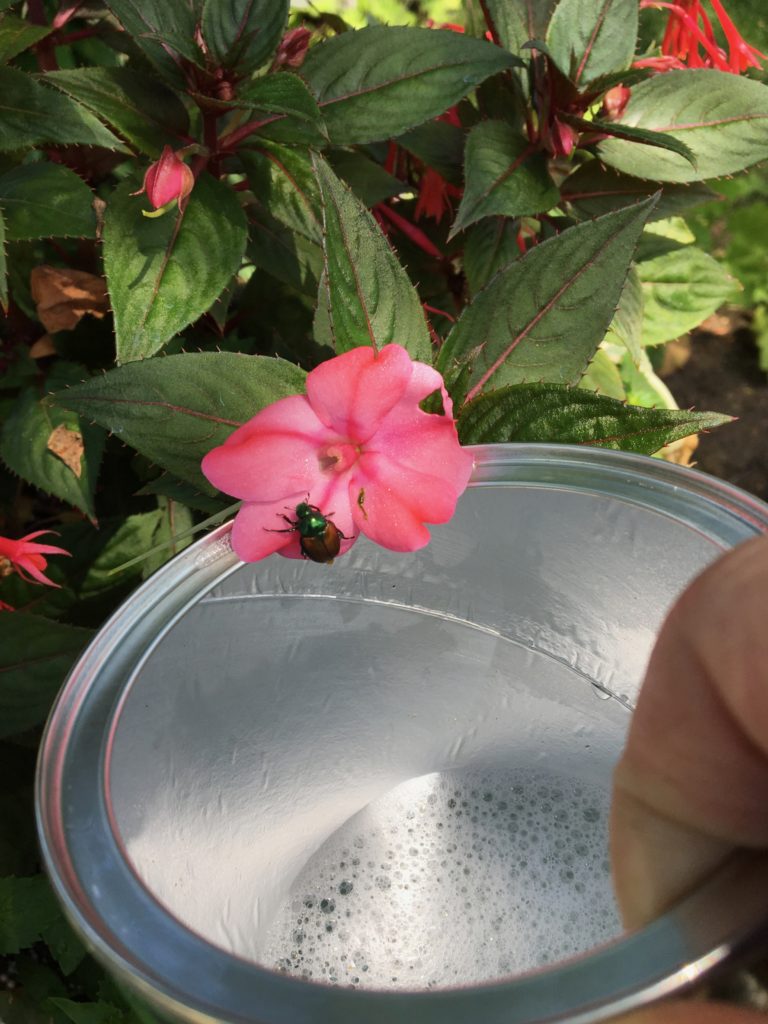
A Japanese beetle nibbles on a pink SunPatiens. (C) Jo Ellen Meyers Sharp
This column ran originally July 21, 2018.
Gardeners from all over have been posting on Facebook about the invasion of Japanese beetles, an insect that has been only a minor pest the last several years.
“Oh my gosh yes,” said Kate Franzman, farmer and beekeeper at Public Greens: Urban Kitchen with a Mission in Broad Ripple. “They are on just about everything. When I get there in the morning I walk through the garden with a container of industrial dish washing liquid from the kitchen and push them into it. In general, the bugs have been unreal this year.”

Broad Ripple’s Public Greens’ Kate Franzman douses Japanese beetles in soapy water. Photo courtesy Kate Franzman
Purdue’s Japanese beetle report
For sure, the leaf- and flower-eating, metallic green beetles appear to be back in record numbers. Even Cliff Sadof, my go-to Purdue University Extension entomologist, issued a report late last month about the influx of the beetles.
“Although the reasons for this resurgence are unclear, part of the story is that for the past few years there has been enough moisture in the soil during the mid summer egg-laying period to allow most of the beetle eggs to hatch into grubs. These grubs flourished and grew into the adult beetles that emerged the following year, he wrote in the Purdue Landscape Report newsletter.
Warmer temps enable emergence of Japanese beetle grubs
This year’s warm temperatures have allowed the grubs to develop and the beetles to emerge and dine on our plants. Japanese beetles prefer members in the rose family, which includes roses, many fruit trees, hibiscus, grape and dozens of other plants.

Japanese beetles seem to prefer yellow roses in Teresa Byington’s garden in Hendricks County. She is president of the Indianapolis Rose Society. Photo courtesy Teresa Byington/TheGardenDiary.com
“They are devouring some of my roses, the ones they love the most are the yellow ones,” said Teresa Byington, president of the Indianapolis Rose Society. She has at least 175 roses on her Hendricks County property. “I have also seen them voraciously attaching the zinnias this year. Ugh!”
Beetle infestation may be spotty
Japanese beetles rarely, if ever, uniformly infest a landscape, Sadof said. “There are always areas with heavy damage and areas with light or no damage at all.”

Japanese beetles skeletonize the leaves of roses. Photo courtesy Teresa Byington/TheGardenDiary.com
There are several insecticides that can be used against Japanese beetle adults, Sadof said. “It can be difficult to kill the beetles without harming pollinators that visit flowers, because most insecticides that kill beetles will also kill pollinators.” Reducing the number of applications is one way to protect pollinators. If you decide an insecticide is the way to go, wait to spray until you see several gathered on the plant, rather than just one or two, he said.
Japanese beetle controls
Byington does not use insecticides. “My only defense is to knock them into a bucket of soapy water. Squishing them or leaving their destructive remains only signal for others to come. We have lately been encouraged by reports that many of our birds are now taking a liking to them. Hopefully in time that will help us with control.”
Other tips:
- Don’t allow the beetles to congregate in great numbers on the plant. A high concentration of beetles alerts their kin that everyone’s welcome. Knock them into a bucket of soapy water.
- Remove any heavily damaged leaves, again, because these serve as calling cards for more beetles.
- For more information, view or download Purdue’s Japanese Beetles in the Urban Landscape.
In my own garden, I’ve seen about a half dozen beetles. Two Japanese beetles on pink SunPatiens were flicked into a can of soapy water for their demise.

Japanese beetle prepares to take a dive into soapy water. (C) Photo Jo Ellen Meyers Sharp
What is the best way to dispose of the beetle filled soapy water?
What a great question! I usually dump mine by or in the compost pile.
I’d like to see the research that supports the idea that killing beetles & leaving them brings in more beetles. I don’t think beetles have a brain big enough to do this or olfactory sense. I want research.